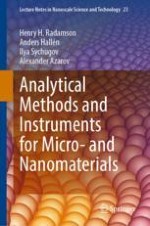This book describes analytical instruments widely used to characterize the nanostructured materials. It provides information about how to assess material quality, defects, the state of surfaces and interfaces, element distributions, strain, lattice distortion, and electro-optical properties of materials and devices. The information provided by this book can be used as a back-up for material processing, material design and debugging of device performance. The basic principles and methodology of each analysis technique is described in separate chapters, adding historic perspectives and recent developments. The data analysis, from simple to advanced level, is introduced by numerous examples, mostly taken from the authors' fields of research; semiconductor materials, metals and oxides.
The book serves as a valuable guide for scientists and students working in materials science, physics, and engineering, who wish to become acquainted with the most important analytical techniques for nanomaterials.
